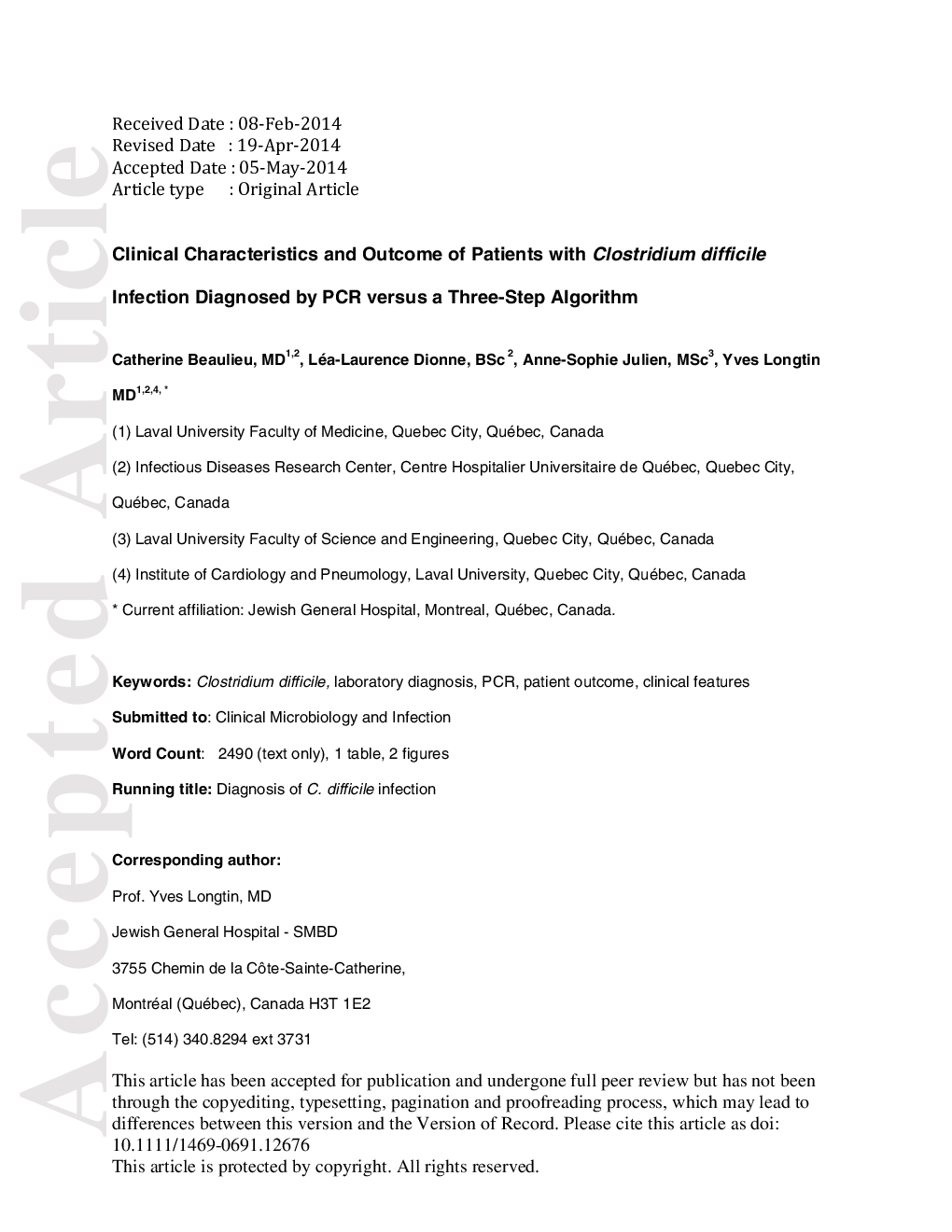| Article ID | Journal | Published Year | Pages | File Type |
|---|---|---|---|---|
| 6130170 | Clinical Microbiology and Infection | 2014 | 16 Pages |
Abstract
Clinical features of Clostridium difficile infections (CDI) detected by PCR, but not by conventional methods, are poorly understood. We compared the clinical features of CDI cases detected by PCR only and cases detected by both PCR and a three-step algorithm. We performed a retrospective cohort study of patients fulfilling a standardized definition over a 13-month period. Stool specimens were tested in parallel by PCR and an algorithm based on enzyme immunoassay and cytotoxicity assay (EIA/CCA). Clinical features of CDI cases detected by PCR only and cases detected by PCR and EIA/CCA were compared by univariate logistic regression. In all, 97 patients (31 PCR+ and 66 PCR+EIA/CCA+) met the inclusion criteria. Compared with cases detected by both PCR and EIA/CCA, CDI cases detected by PCR only were younger (65.4 versus 76.3 years; p 0.001), had a lower absolute neutrophil count (mean, 9.4 Ã 109/L versus 12.5 Ã 109/L; p 0.04), were less likely to receive oral vancomycin (2/31 versus 25/66; p 0.005) or combination therapy (0/31 versus 16/66; p 0.04), and had fewer complications (6/31 versus 29/66; p 0.02), despite presenting a higher number of bowel movements on the day of diagnosis (median, 6.0 versus 3.0; p 0.02). They had also a lower C. difficile faecal bacterial load (mean, 5.04 versus 6.89 log10 CFU/g; p <0.001). The CDI cases detected by PCR only and cases detected by both PCR and EIA/CCA have different clinical features, but whether these two populations can be managed differently remains to be determined.
Keywords
Related Topics
Life Sciences
Immunology and Microbiology
Microbiology
Authors
C. Beaulieu, L.-L. Dionne, A.-S. Julien, Y. Longtin,
